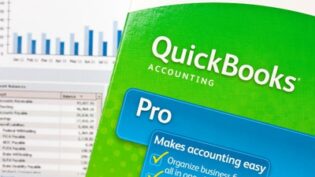
Controlling cash and credit are important for any small business. However, a growing number of entrepreneurs establishing a startup business can’t answer the three basic cash and credit management questions that most bankers, venture capitalists, and angel investors will ask when considering whether to fund a start-up business.
The questions are:
- What levels of debt can your business safely support?
- What’s a realistic timetable for your cash flow from sales?
- How are you going to manage periods of cash shortfalls? (Debt, credit, deferred purchases or payments, collections?)
Answering these questions is the first step in effective small business cash management. You’ll need the answers any time you need to raise capital from any outside source, whether that’s a banker, a credit card company line of credit, or through angel or venture capital investment.
Small business cash management is as much art as science. Even when every realistic step has been taken to control cash flow, most start-up businesses still face occasional periods of cash shortfalls. To tide them over these periods, nearly every start-up business will have to borrow from an outside source such as a commercial bank or credit card company, a business factor (a company which makes a short-term loan against receivables), or a convertible note with angel investors.
Deb McAlister-Holland, a mentor at one of the country’s Top 10 business accelerators, Dallas-based Tech Wildcatters, says that ideally a start-up business will have 18 months of “runway” cash in the bank when they launch. “Angel investors call the seed money that a startup business raises initially ‘runway’ money because that’s the money they have to get their product developed, tested, and effectively launched into the marketplace. I like to see a financial plan for seed-round investment that gives a company 12-18 months of runway time. With less than that, the founders are back raising capital too soon, and they get distracted.
“With more than 18 months, they tend to overspend, or not move quickly enough to translate their ideas into market-ready products. I walk away from any company that doesn’t show me at least a 12-month runway that will take them from launch to the next cash event.”
But what if your business doesn’t lend itself to outside investment? How much cash do you need then? That depends, the experts say. Entrepreneur Magazine has a startup cost calculator online. The expenses that have to be budgeted for include:
- Rent/utilities
- Capital costs (equipment, furnishings, and other tangible goods required for your business—from front-office computers to factory floor equipment)
- Inventory (the costs to purchase or make the products you sell—or if you are a service business, the tools you need to support your service)
- Shipping/packaging
- Salaries (yours & anyone you hire)
- Taxes (including state fees and registrations, sales taxes, payroll taxes, and income taxes)
- Legal costs (startup costs, contract review, protection of intellectual property, and a contingency budget)
- Accounting & bookkeeping costs
- Marketing & sales cost (website, business cards, advertising, SEO, videos, etc.)
- Travel and out-of-pocket expenses (entertainment, mileage)
- Supplies (the disposable, one-time use products you’ll need—from cleaning supplies for your workspace, to toner cartridges for your printer, to coffee filters for the office coffee pot. Every business spends money on supplies)
Your business may have other costs, of course, and some of these might not apply to your business. But no matter what kind of business you operate, you need a realistic budget and cash-flow plan to get started.
Getting Ready to Borrow or Raise Money
It takes time to get a small business loan or raise money from investors. Figure on at least 90 days between the time your proposal is presented and the day you get a check. (Yes, it can happen more quickly, but don’t bet your company on it.)
This means that small business owners can’t wait until the cash is nearly gone to get the company’s books and records in order to show to a potential investor or banker. It’s always smart to keep your books and records up to date, in case of an audit by state or federal tax authorities, but many small business owners try to conserve cash by taking on too many responsibilities themselves—and bookkeeping and accounting are two areas where startup business owners get into trouble through procrastination.
The second step in effective small business cash management is to keep your focus on receivables and inventory. For a service business, receivables may be the only asset that can be borrowed against.
Ideally, receivables and inventory turn into cash as soon as you wish. However, unless you manage them carefully, cash flow and carrying costs become a problem. To manage your working capital properly, you must know:
- The age of your receivables and inventory. (How long have you been owed money? How long have you had inventory in stock?)
- The turn of your receivables and inventory. (Are you paying to replace inventory before you get paid for the inventory you sold? Are your customers paying according to the agreed terms, or are they paying late?)
- The concentration of your receivables (how many customers comprise the majority of your receivables, what amount of receivables they represent, what products the receivables cover) and inventory by product lines. (More than a few small businesses have learned the hard way that concentrating on one or two big clients instead of prospecting for new business can be deadly if one of those big clients suddenly goes away.)
One of the most common mistakes startup businesses make is mistaking sales for profit. They extend more and more credit, pursue lax collection policies and end up financing their customers to increase sales. Most businesses cannot afford to provide interest-free loans to customers just because they expect it. Slow-paying customers must be subject to profitability analysis, which takes into account their carrying costs. Sales increases should translate into profits on the bottom line, but it’s difficult to increase profits when you’re carrying customers who habitually stretch their payments.
To control your receivables:
- Break receivables out weekly to spot slow-pay accounts as soon as possible.
- Separate invoices into current, 15 days, 30 days, 60 days, 90 days, and more than 90 days.
- Calculate your collection period by dividing annual credit sales to find the average daily credit sale. Then divide your current outstanding receivables total by the average daily credit sale. This yields your collection period.
Here’s a good rule of thumb for a quick test of your receivables management: If your collection period is more than one third greater than your credit terms (for example, 40 days if your terms are net 30), you have a looming problem.
Establish a Contingency Plan
Last, but not least, establish a contingency plan on how to handle a cash flow crisis if you can’t raise additional capital through borrowing, credit, or new investment. Every startup business is started by an optimist who doesn’t dream that things can go wrong—but they do.
Smart entrepreneurs hope never to use their contingency plan, but they have one anyway. A contingency plan doesn’t have to be lengthy—a single page may be more than adequate.
Answer these questions:
- What suppliers would give you extended terms or carry you in case of a crunch? Why would they carry you? How long and how much?
- What new investment could you make? Would you refinance personal assets to provide a cash cushion for your business? Could you? What other assets could you bring to support a cash crunch?
- What assets does your business have to either sell or turn into cash some other way if necessary (perhaps a sale/leaseback, for example)?
- How will you keep your banker and major trade creditors on your side? (This is where personal relationships really help out – consider banking with a small, local bank instead of a big national chain, and make sure your banker knows you and knows something about your business before you try to get a loan.)
- Have you examined all possible sources of additional working capital in your business? Where might you have some leverage?
- What customers would be willing to prepay or speed up orders if it would help you?
The purpose of a contingency plan is to make sure before a crisis occurs that you won’t panic. As evidence of thoughtful business management, it’s hard to beat and is being sought by more and more potential investors and loan officers.
This article was originally published by 1800 Accountant
Published: September 26, 2013
2981 Views
2981 Views












